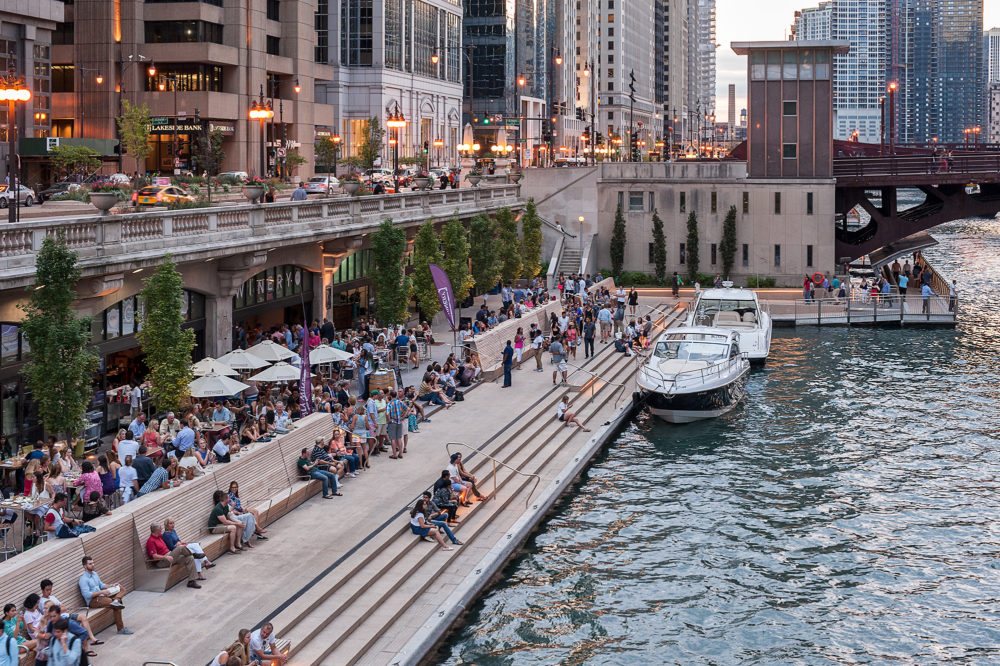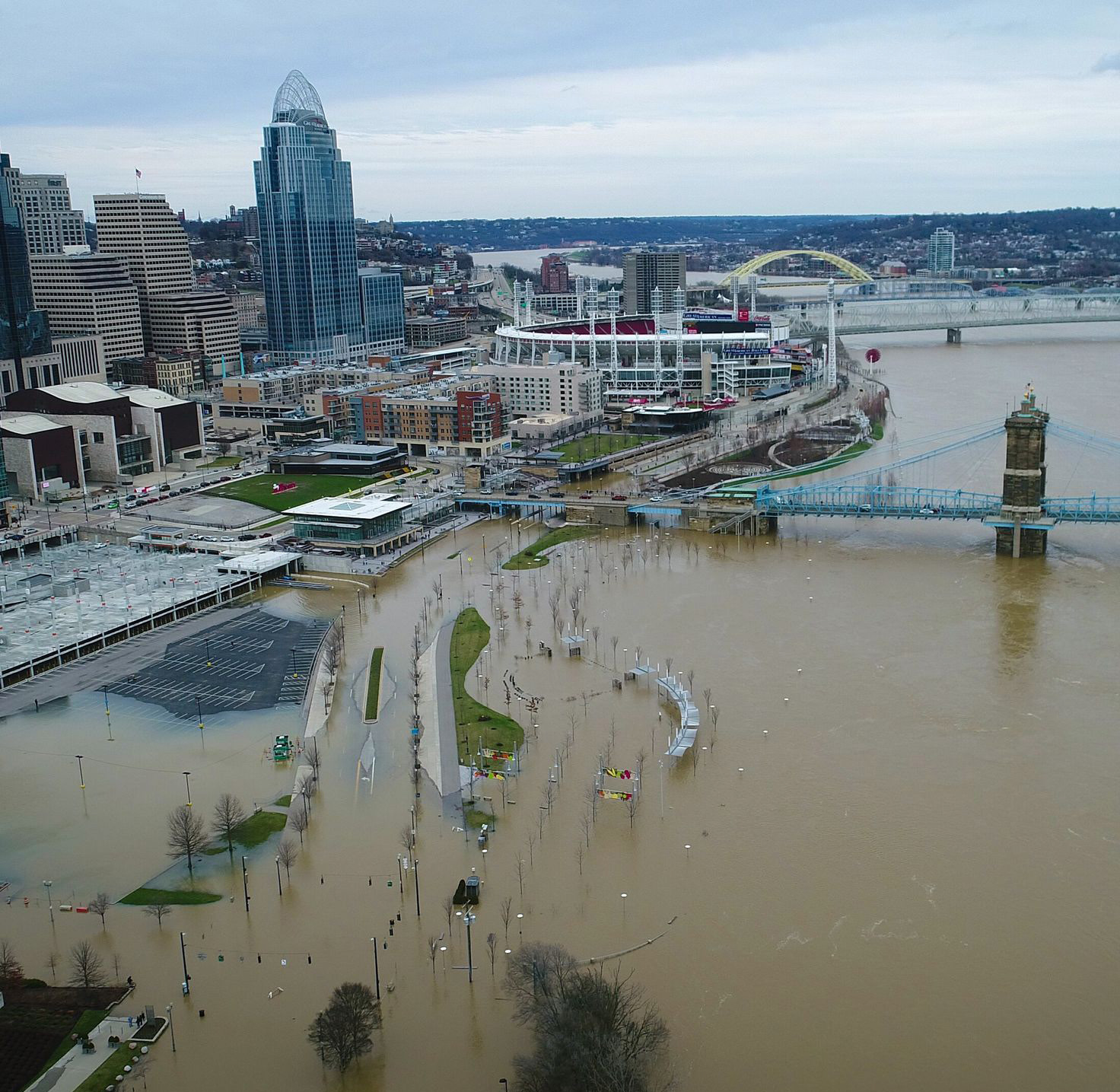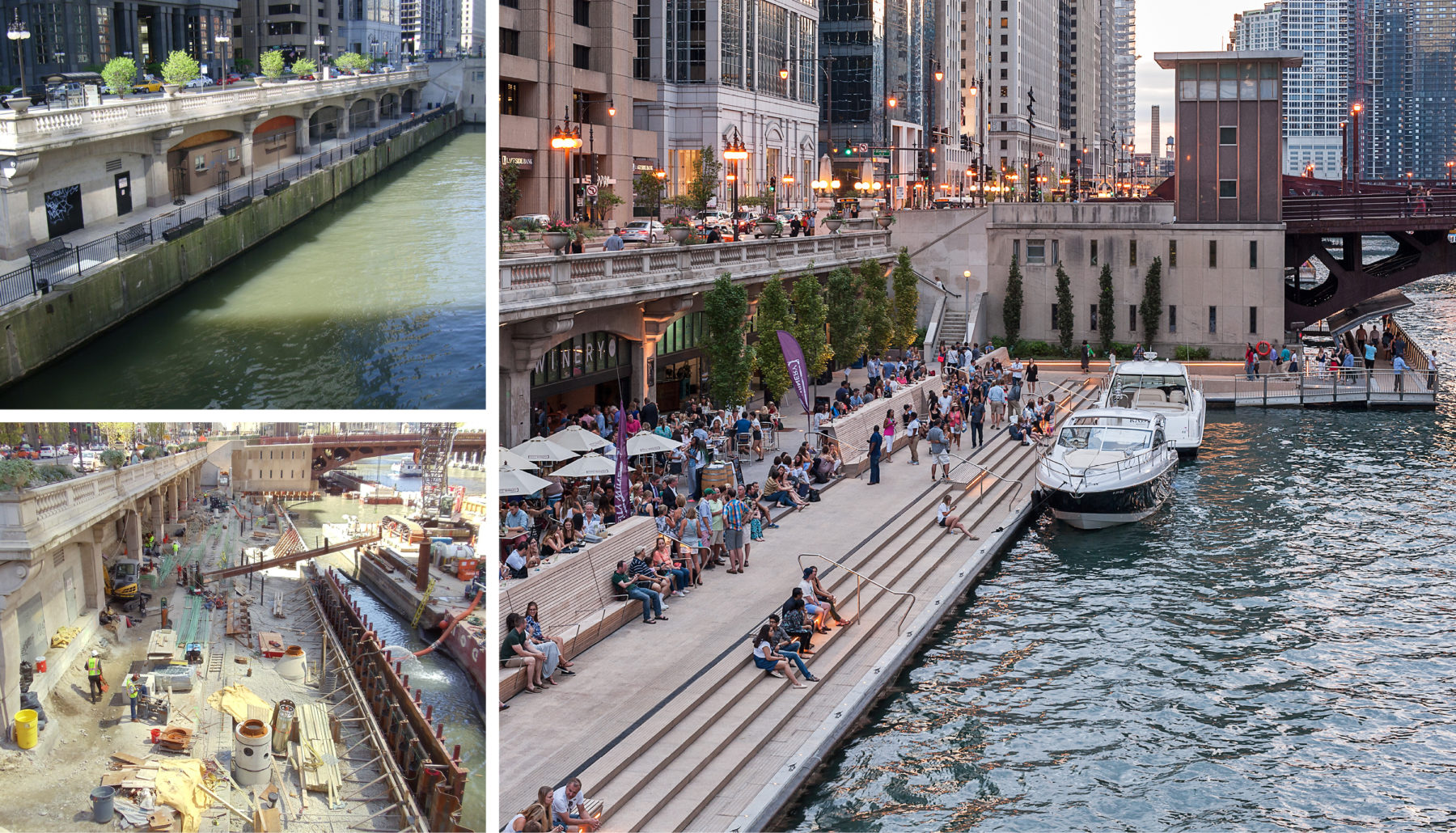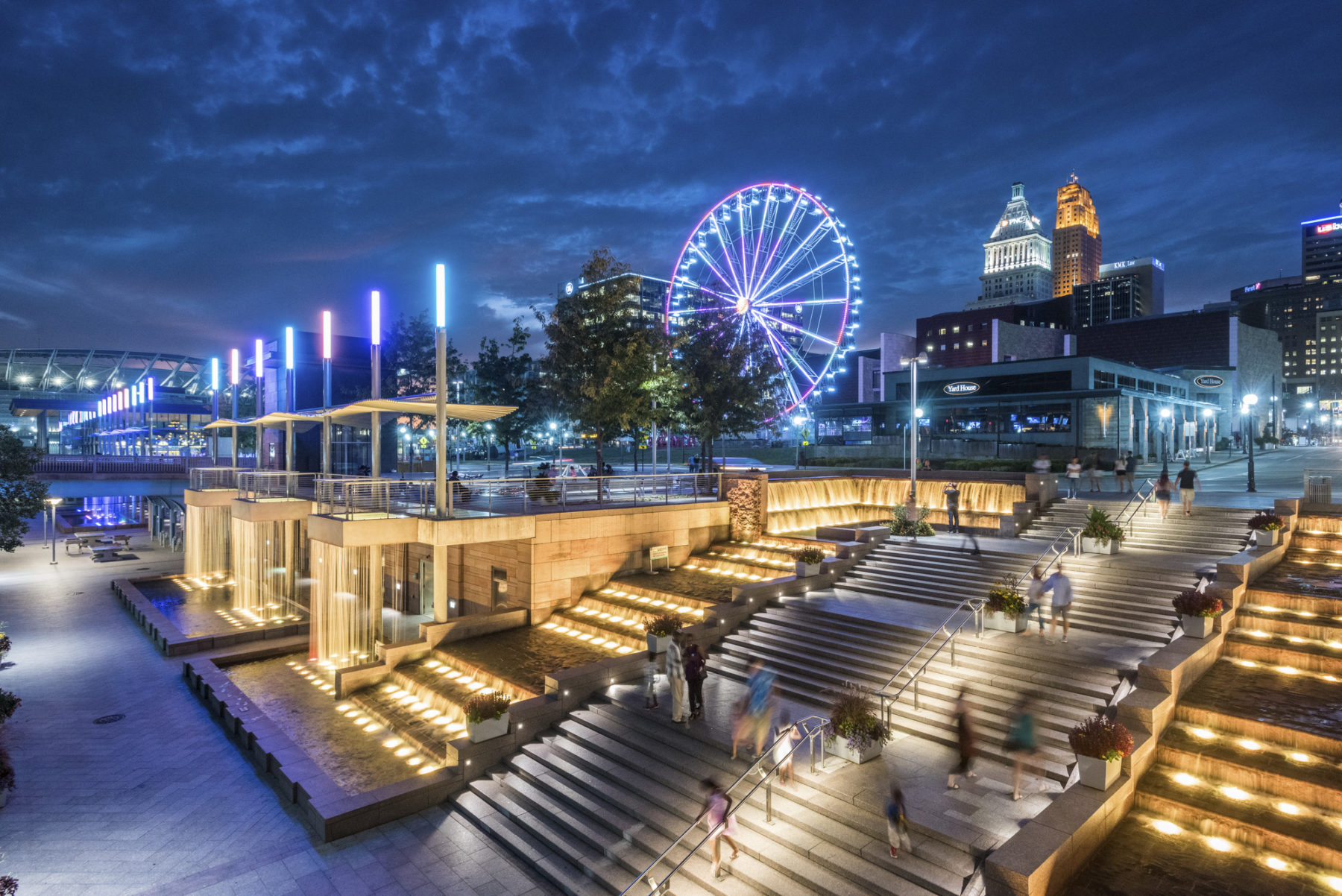
Chicago Riverwalk
Chicago, IL
 Sasaki
Sasaki

As the world around us changes, we must react to the climate crisis on scales large and small. No stone should go uncovered; no idea should be seen as impossible.
As designers and planners, we see the best work as a form of applied research: we are forever testing new ideas, new strategies, in the face of our clients’ and our communities’ challenges. When it comes to the challenges placed on us by climate change and rising waters, we use all the tools at our disposal. Only through this process of curiosity, exploration, and innovation can we ensure that our industry is at the forefront of resilience.
Throughout our work in the design of parks and public landscapes over the past years, we have striven to execute the latest thinking about resiliency strategies, creating public spaces that embrace water, and in so doing, help communities reconnect with the physical spaces that are key to their identities. Earlier this year we were proud to see that one of our projects with the City of Boston, the Climate Ready Boston Report received national recognition from the American Planning Association (APA)– awarded the only Gold winner in the Resilience category in the APA’s 2019 awards program. The project was led by an interdisciplinary team comprised of HR+A, Arcadis, and Sasaki. This award recognizes projects advancing strategies that “increase the ability of a community to recover from and adapt to shocks and stresses” —whether from climate change or related natural disasters. The power of this project, according to the APA, was in its ability to strengthen the community, and as a result better prepare it to deal with oncoming climate change challenges. Ultimately, the power of any given project is in its longevity. Expert designers and planners are only effective if they deputize those who engage them, furthering the knowledge and awareness of those who live with the impact of rising waters.
Through this blog series we will explore and reflect upon how several of our built parks projects in the United States have worked both to strengthen the communities of which they are a part, and specifically how each has fared against the stress of floods that have occurred in recent years. Through our work with forward-thinking municipal clients, we are proving it’s possible for public spaces along waterfronts to be both places that protect communities from floods, and everyday places that strengthen the landscape by providing a vibrant public realm and experience of the water’s edge. Creating spaces that can do double-duty helps demonstrate a new future in which we live with the water in new and inspiring ways.
Click into the following project stories for more about a few of Sasaki’s latest resilient waterfront projects that aim to make cities across the world more climate ready, beautiful, and usable along their shores.
In The Dynamism of the Chicago River, read about how the design fared after a record flood that occurred immediately after the project opening, and also about how we used the opportunity afforded by re-connecting Chicagoans with the water’s edge to support a flourishing of the natural ecology of the river.

In Getting Creative in the Floodplain, read about how the Parks team was able to prepare the Smale Riverfront Park in Cincinnati for record-setting flood in February 2018, including how many popular elements of the park are designed to be removed from the floodplain in advance of rising waters, as part of a larger resiliency strategy.
